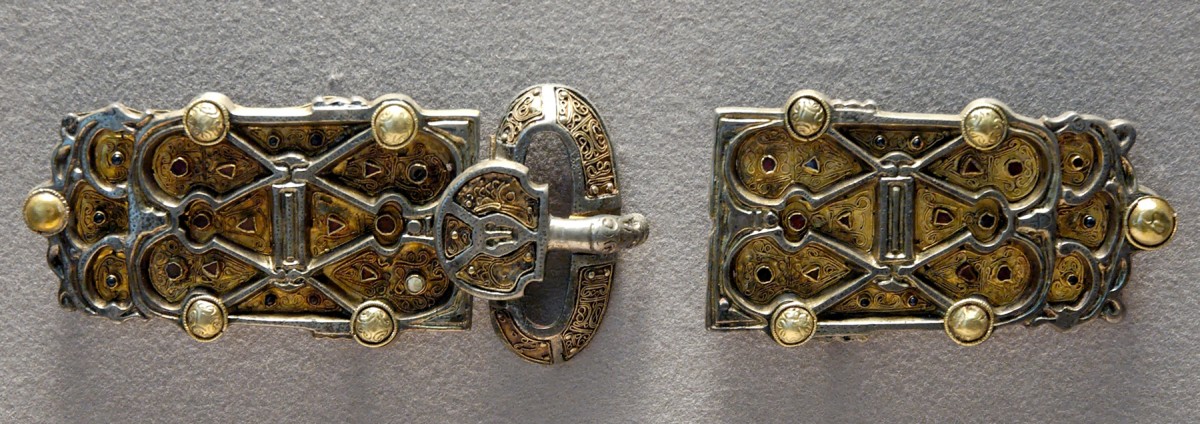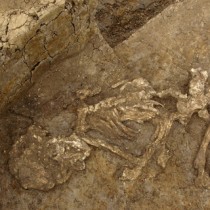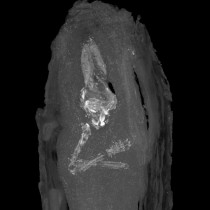In 1959 a preserved lung was found by archaeologist Michel Fleury in a stone sarcophagus in the Basilica of St. Denis, in Paris. At this site the kings of France were buried for centuries. Along with the lung skeletal remains, a strand of hair, textile and leather fragments, as well as a golden ring with the inscription “Arnegundis Regine”, were found. Among the grave goods, an elaborate copper belt was also discovered.
The inscription on the golden ring showed the remains belonged to the Merovigian Queen Arnegunde. Arnegunde, Aregunda, Aregund, Aregonda or Arnegonda (c. 515/520-580) was a Frankish queen, the wife of Clotaire I, king of the Franks, and the mother of Chilperic I of Neustria.
The discovery of the preserved lung raised the question of how it could be preserved while the body was completely skeletonized.
Raffaella Bianucci, bio-anthropologist in the Legal Medicine Section at the University of Turin, led the international team which investigated the lung. The results of this research were presented at the International Conference of Comparative Mummy Studies in Hildesheim, Germany.
As Bianucci explained, scanning electron microscopy on the lung biopsies showed a massive concentration of copper ion on the surface of the lung tissue. Further analysis revealed the presence of benzoic acid and related compounds in the lung.
“These substances are widespread in the plant kingdom and similar profiles have been already reported in the balms of Egyptian mummified bodies,” Bianucci said.
Based on these findings, researchers believe that a fluid of spices/aromatic plants may have been infused into the queen’s mouth. These substances then settled in Arnegunde’s lung allowing its preservation. Copper, which also has preserving properties, from her belt also contributed to the organ’s preservation.
According to Discovery News, in sixth century France, spices and aromatic plants were used in artificial mummification of kings, queens, holy men and women. The Merovingians had adopted the procedure from the Romans, who, in turn, had learned it from the Egyptians.
“Clearly the Merovingian mummification was much less sophisticated,” Bianucci said. “It was essentially based on the use of oil and resin-soaked linen strips used with spices and aromatic plants such as thyme, nettles, myrrh and aloe,” Bianucci said.




